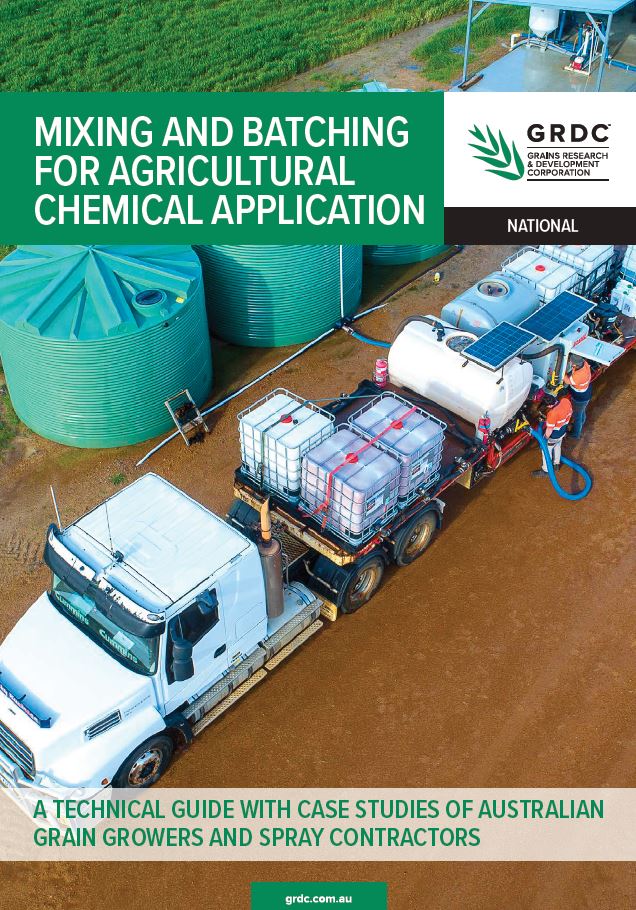Mixing and Batching For Agricultural Chemical Application - Grower case studies
Mixing and Batching For Agricultural Chemical Application - Grower case studies
Published: 24 Nov 2022
A technical guide with case studies of Australian grain growers and spray contractors
Most mixing and batching issues arise from mixing errors. These can be avoided by adhering to the correct mixing order and allowing sufficient time between additions of chemical products.
Key considerations
- Always follow the correct mixing order and allow sufficient time between the addition of different products.
- When preparing multiple-product tank mixes, check the physical compatibility of the products beforehand.
- Water volume is critical for good mixing and stability. Fewer problems are associated with larger water spray volumes, as there is more ‘room’ in the solution for the various components to disperse, dissolve or emulsify and remain in suspension.
- Always read and follow the product label compatibility advice and the manufacturer’s mixing guidelines.
- Use good quality water, especially for multiple-product mixes, as poor water quality can lead to issues.
- Adjuvants may be used to improve the physical compatibility of certain tank mixes.
- When mixing a batch for the first time, conduct a jar test (see ‘Other spray resources’ on page 43) that replicates the tank mix. This will reduce the risk of financial losses and time-consuming and environmentally unfavourable outcomes in cases where the mix does not turn out as intended.
Download PDF
Region: National
GRDC Project Code: BCC1910-001SAX,

